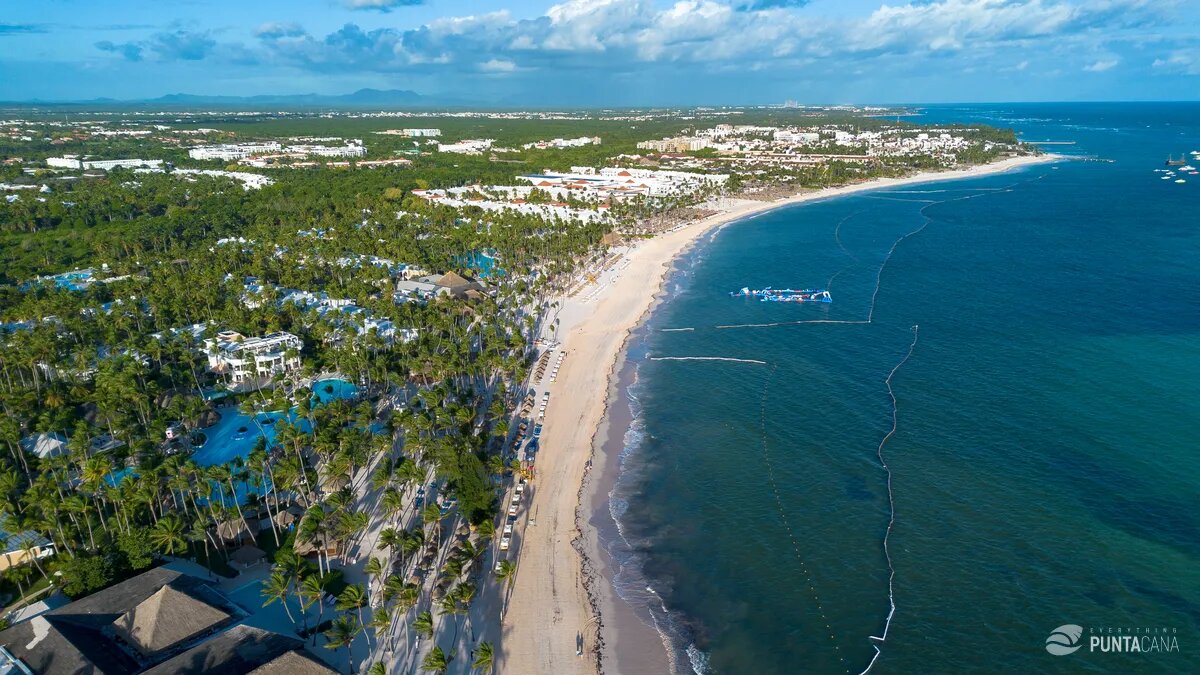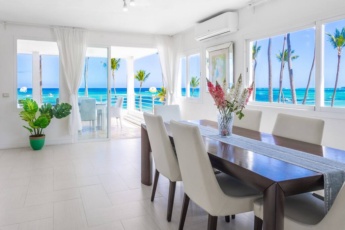I Don’t Speak Spanish — Can I Still Stay Comfortably in Punta Cana?
Navigating Language Barriers in Punta Cana

I Don’t Speak Spanish — Can I Still Stay Comfortably in Punta Cana?
Punta Cana is a paradise that welcomes travelers from around the globe. Yet, for non-Spanish speakers, the language barrier can be a concern. Fortunately, there are numerous strategies to ensure a comfortable stay without speaking Spanish fluently.
1. English Prevalence in Tourist Areas
In Punta Cana, English is widely spoken in tourist hotspots, including resorts, restaurants, and shops. These areas cater primarily to international visitors, and staff are often bilingual, ensuring that communication is smooth and stress-free. For instance, most major hotels and resorts have personnel who are proficient in English, ready to assist with any need, from room service requests to booking local excursions.
English Proficiency in Various Tourist Spots
| Location | English Proficiency | Additional Notes |
|---|---|---|
| Resorts | High | Most staff speak fluent English |
| Restaurants | Moderate to High | Menus often available in English |
| Shops | Moderate | Basic English for transactions |
Even outside the resorts, in bustling areas like Bávaro Beach, you will find that many locals have a working knowledge of English, especially those involved in the tourism industry. The Dominican culture is known for its warmth and hospitality, and locals often go the extra mile to communicate, even if it means using a mix of gestures and basic English.
2. Language Apps and Translation Tools
In the digital age, language is no longer a barrier thanks to the myriad of translation tools and apps available. Apps like Google Translate and iTranslate offer instant translation services, allowing you to communicate effectively with locals. These apps are particularly useful for translating menus, signs, and even entire conversations in real-time.
To make the most of these tools, download the language pack for offline use to avoid data charges and poor connectivity issues. Additionally, use the camera feature to translate text directly from images, which is invaluable when navigating through menus or reading signs.
3. Common Spanish Phrases for Travelers
While technology provides a convenient fallback, learning a few basic Spanish phrases can significantly enrich your travel experience. Showing an effort to speak the local language often builds rapport and fosters a more authentic connection with the locals. Here are some essential phrases that can ease your journey:
- Hola – Hello
- Por favor – Please
- Gracias – Thank you
- ¿Cuánto cuesta? – How much does it cost?
- ¿Dónde está el baño? – Where is the bathroom?
- No hablo español – I don’t speak Spanish
- ¿Habla inglés? – Do you speak English?
Mastering these phrases can make interactions smoother and more enjoyable, potentially leading to memorable experiences that go beyond the typical tourist path.
Finding English-Friendly Accommodations
For travelers concerned about language barriers, choosing the right accommodation can significantly enhance your stay in Punta Cana. Opting for places where English is commonly spoken ensures a smooth and enjoyable experience. Here’s a guide to help you find English-friendly accommodations.
1. Resorts and Hotels with English-Speaking Staff
In Punta Cana, many resorts and hotels cater to international guests, making English-speaking staff a standard feature. Notable establishments such as the Hard Rock Hotel & Casino Punta Cana and Paradisus Palma Real boast highly trained staff who are fluent in English. This ensures that guests can easily communicate their needs and enjoy personalized services without any language barriers. Another excellent choice is the Majestic Colonial Punta Cana, renowned for its attentive English-speaking staff, making it a preferred choice among English-speaking travelers.
Additionally, these accommodations often offer English-language entertainment and activities, such as guided tours and water sports instructions, providing a seamless and engaging experience for guests.
2. Booking Through English-Language Websites
Utilizing English-language travel websites such as Booking.com and Expedia offers numerous advantages. These platforms provide detailed information about the accommodations, including reviews, amenities, and photos, all in English. This allows travelers to make informed decisions without the stress of language barriers.
Furthermore, these sites often have customer service support available in English, which can be invaluable if issues arise during your booking process. They also offer features such as flexible cancellation policies and multi-currency payment options, making the booking process straightforward and convenient for international travelers.
3. Checking Reviews for Language Support
Before booking, it’s wise to read reviews from fellow travelers to understand the level of English support provided by the accommodation. Websites like TripAdvisor allow guests to leave detailed feedback on their experiences, including the language proficiency of the staff. Look for keywords like “English-speaking staff” or “excellent communication” in reviews to gauge the level of language support you can expect.
Selecting the right accommodation with English-friendly services can significantly enhance your Punta Cana experience, making it more enjoyable and stress-free. By following these guidelines, you can ensure that your stay is as comfortable and accommodating as possible, allowing you to focus on enjoying the beautiful surroundings and vibrant culture of the Dominican Republic.
Enjoying Activities Without Speaking Spanish
Punta Cana, known for its stunning beaches and vibrant culture, offers a multitude of activities that can be enjoyed even if you don’t speak Spanish. By choosing the right tours and leveraging creative communication, you can fully immerse yourself in the local experiences without the stress of a language barrier.
Punta Cana

Punta Cana
1. English-Language Tours and Excursions
One of the best ways to explore Punta Cana without language concerns is by joining English-language tours. Many tour operators cater specifically to English-speaking tourists, offering a variety of excursions that showcase the region’s natural beauty and cultural heritage. Whether you’re interested in a catamaran cruise, a snorkeling adventure, or a historical tour, you can find options that provide English-speaking guides.
- Saona Island Excursion: This popular day trip includes a visit to the picturesque Saona Island, with tour guides fluent in English to explain the island’s history and natural highlights.
- Cultural Tours: Explore the Dominican Republic’s rich culture with tours that include English-speaking historians and cultural experts.
- Adventure Tours: Engage in activities such as zip-lining or ATV rides with instructions and safety briefings provided in English.
Booking these tours through reputable agencies ensures a smooth experience, as they are accustomed to hosting international guests. It’s also beneficial to check reviews on platforms like TripAdvisor to see past travelers’ experiences regarding the language support.
2. Using Visual Communication Aids
If you find yourself in situations where language becomes a barrier, visual communication aids can be a lifesaver. This technique involves using images, gestures, and body language to convey your message. Here are some practical applications:
- Picture Cards: Carry a set of laminated cards with images of common items (like food, transportation, or amenities) to show to locals when needed.
- Gestures: Simple gestures, such as pointing or miming actions, can effectively bridge communication gaps.
- Photo Apps: Use smartphone apps to show photos of places or items you are inquiring about. This can be particularly useful for asking directions or identifying food items.
Employing visual aids not only helps in communication but also adds a fun and interactive element to your interactions with the locals.
3. Connecting with English-Speaking Locals and Expats
Building connections with English-speaking locals and expatriates can greatly enhance your experience in Punta Cana. There is a thriving community of expats and bilingual locals who are often eager to share their insights and tips.
- Expat Groups: Joining online forums or social media groups dedicated to expats in Punta Cana can provide valuable advice and recommendations. Platforms like Facebook often have groups dedicated to English speakers in the region.
- Local Meetups: Attend local meetups or events where English-speaking locals gather. This can be a great way to make friends and learn about hidden gems in the area.
- Language Exchange Programs: Some locals are interested in language exchange, where you can practice Spanish while they practice English. It’s a win-win situation!
By engaging with the local English-speaking community, you’ll not only gain valuable insights into the culture and lifestyle but also make your stay more enjoyable and less isolated.
In conclusion, enjoying the vibrant offerings of Punta Cana is entirely possible without speaking Spanish. By selecting English-friendly tours, using visual communication, and engaging with the local expat community, you can create unforgettable experiences in this tropical paradise.
Dining and Shopping in Punta Cana Without Spanish
Exploring the vibrant culture of Punta Cana through its dining and shopping experiences can be a delightful adventure, even for those who don’t speak Spanish. With a few strategic tips, you can navigate these experiences smoothly and confidently.
1. English Menus and Signage in Restaurants
Finding restaurants with English menus and signage is quite feasible in Punta Cana, especially in tourist-heavy areas. Many eateries, particularly those located within hotel zones or popular tourist spots, cater to international guests by providing menus in multiple languages.
- Research Online Beforehand: Websites like TripAdvisor and Yelp often mention if a restaurant provides English menus. Checking reviews can offer insights into the language support offered.
- Visit Tourist Hotspots: Restaurants in areas like Bavaro Beach and Cap Cana frequently have English-speaking staff and English menus to serve their diverse clientele.
- Ask for Assistance: Don’t hesitate to ask the staff directly if an English menu is available. Most are more than willing to accommodate international visitors.
2. Using Translation Apps for Menus and Prices
Translation apps are your best companion when navigating through menus and price tags in Punta Cana. These tools can bridge the language gap and help you make informed choices.
Popular translation apps such as Google Translate and iTranslate offer real-time translation features. These apps can be used to scan text, translating it instantly into English. This is particularly useful for understanding menu items or haggling prices in local markets.
- Download Apps Before Traveling: Ensure your apps are downloaded and updated before you leave home, as some areas may have limited internet connectivity.
- Utilize Offline Features: Google Translate offers an offline feature which can be a lifesaver when you’re in areas with no Wi-Fi.
3. Seeking Out International Chains and Brands
For those who prefer familiar environments, seeking out international chains and brands can be a stress-free option. These establishments often have standardized practices, including the use of English.
Comparison of International Chains in Punta Cana
| Brand | Location | Language Support | Type |
|---|---|---|---|
| Starbucks | Bavaro Beach | English/Spanish | Café |
| Hard Rock Café | Downtown Punta Cana | English/Spanish | Restaurant |
| Zara | Blue Mall Punta Cana | English/Spanish | Retail |
These brands not only offer familiar products and services but also provide a comfortable environment for English-speaking travelers. Moreover, the staff at these outlets are usually proficient in English, ensuring a seamless shopping or dining experience.
In summary, dining and shopping in Punta Cana without speaking Spanish is entirely manageable with a bit of preparation. Embrace the opportunity to explore new flavors and products, utilizing the tools and resources available to make the most of your visit.
Transportation and Navigation Solutions
Exploring Punta Cana without speaking Spanish doesn’t have to be daunting. With the right strategies and tools, transportation and navigation can become seamless experiences. Whether you’re hopping into a taxi or exploring the area on foot, these tips will help you get around with ease.

Punta Cana, drone view
1. English-Speaking Taxi and Shuttle Services
Punta Cana offers a variety of taxi and shuttle services that cater to English-speaking tourists, ensuring that you can travel comfortably and without misunderstandings. It’s important to book these services in advance to guarantee an English-speaking driver.
- Consider using reputable companies such as Punta Cana Taxi or Dominican Shuttles, which are known for their bilingual staff.
- Request an English-speaking driver when making a reservation. Many services are accommodating and will ensure that your needs are met.
- Utilize hotel concierge services to arrange transportation. They often have partnerships with reliable taxi and shuttle companies.
These services not only provide convenience but also offer peace of mind, knowing that communication will be smooth. Additionally, using these services can help you gain local insights and recommendations from the drivers.
2. Navigating Public Transport with Language Barriers
While public transport might seem intimidating without Spanish language skills, it can be a cost-effective way to explore Punta Cana. Here are some tips to make it easier:
- Research bus routes in advance. Websites and apps like Punta Cana Public Transport can offer detailed route maps and schedules.
- Prepare a list of essential Spanish words related to public transport, such as “autobús” (bus) and “parada” (stop).
- Carry a map or a guidebook with visual cues that can help you identify stops and landmarks.
- Ask for help from fellow passengers. Many locals are friendly and willing to assist tourists.
Public transportation offers a unique glimpse into local life and is a great way to immerse yourself in the culture. With a little preparation, it can become a rewarding part of your travel experience.
3. Using GPS and Mapping Apps for Directions
Modern technology can be your best friend when navigating Punta Cana. With reliable GPS and mapping apps, you’ll never feel lost:
- Google Maps: This app is incredibly useful for real-time navigation. Make sure to download maps for offline use, especially if you’re unsure about mobile data availability.
- Maps.me: Known for its offline capabilities, this app is perfect for travelers who want detailed maps without relying on the internet.
- Consider using translation apps that integrate with GPS, such as Google Translate, to convert location names and landmarks from Spanish to English.
These apps not only help you find your way but also allow you to explore hidden gems and less-known spots around Punta Cana that you might otherwise miss.
Our Ocean View Penthouses for Rent in Punta Cana
Discover the ultimate comfort in Punta Cana by staying in one of our luxurious ocean view penthouses. These accommodations are perfect for non-Spanish speakers, offering a serene retreat with breathtaking views and top-notch amenities.

Ocean View Penthouse Right on Bávaro Beach, Punta Cana
from $413 / night Read more
Oceanfront Apartment with Amazing View – Right on Bávaro Beach
from $314 / night Read more
Luxury Punta Cana Ocean View Apartment – Directly on Bávaro Beach
from $331 / night Read moreBy embracing these transportation solutions, you can confidently explore Punta Cana, ensuring a memorable and stress-free travel experience.
Frequently Asked Questions
Can I get by in Punta Cana if I don’t speak Spanish?
Yes, you can comfortably stay in Punta Cana without speaking Spanish.
Many locals in the hospitality industry, such as hotel staff, tour guides, and restaurant employees, speak English.
It’s a popular tourist destination, so English is widely used.
Will I find English-speaking staff at hotels and resorts in Punta Cana?
Most hotels and resorts in Punta Cana have English-speaking staff members. They are accustomed to international guests and can assist you in English for check-ins, reservations, and other services.
Are there English menus available in restaurants in Punta Cana?
Yes, many restaurants in Punta Cana offer menus in both Spanish and English. This is especially true in tourist areas and larger establishments, making it easier for non-Spanish speakers to order food.
Can I use English to communicate with taxi drivers in Punta Cana?
While some taxi drivers may speak English, it’s not guaranteed. It’s helpful to have your destination written down or use a translation app if needed.
Using hotel transportation services or pre-booked transportation can also ensure better communication.
Is it necessary to learn basic Spanish phrases before visiting Punta Cana?
It’s not necessary, but learning a few basic Spanish phrases can enhance your experience and make interactions smoother. Simple phrases like “hello” (hola), “thank you” (gracias), and “please” (por favor) are appreciated by locals.
Are there English-speaking tours and excursions available in Punta Cana?
Yes, there are many tours and excursions offered in English. Tour operators cater to international visitors, ensuring guides who speak English to provide a better understanding of the attractions.
How can I handle emergencies if I don’t speak Spanish in Punta Cana?
In case of an emergency, it’s advisable to contact your hotel staff or tour operator who can assist you.
Some emergency services and medical professionals also speak English, especially in tourist areas.
Having basic information written down in Spanish can be helpful.
Will I be able to use English at shopping centers and markets in Punta Cana?
In larger shopping centers, you will likely find staff who speak English. However, in local markets, English might be less common, so it could be beneficial to use a translation app or bring a Spanish phrasebook.
Should I use a translation app while in Punta Cana?
Yes, using a translation app can be very beneficial. Apps can help bridge language gaps, especially in situations where English is not widely spoken, such as in local markets or with taxi drivers.
Updated on: . Author:
